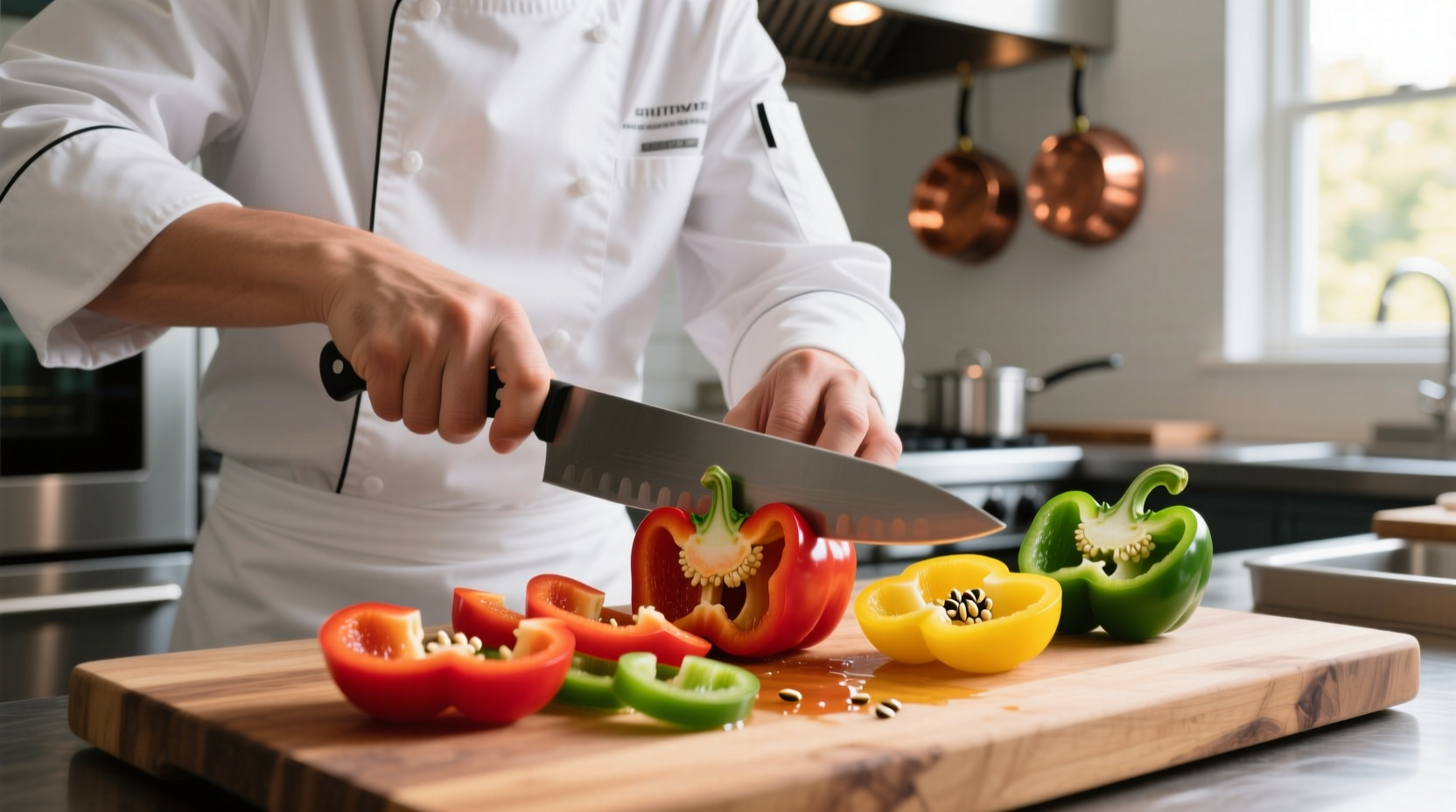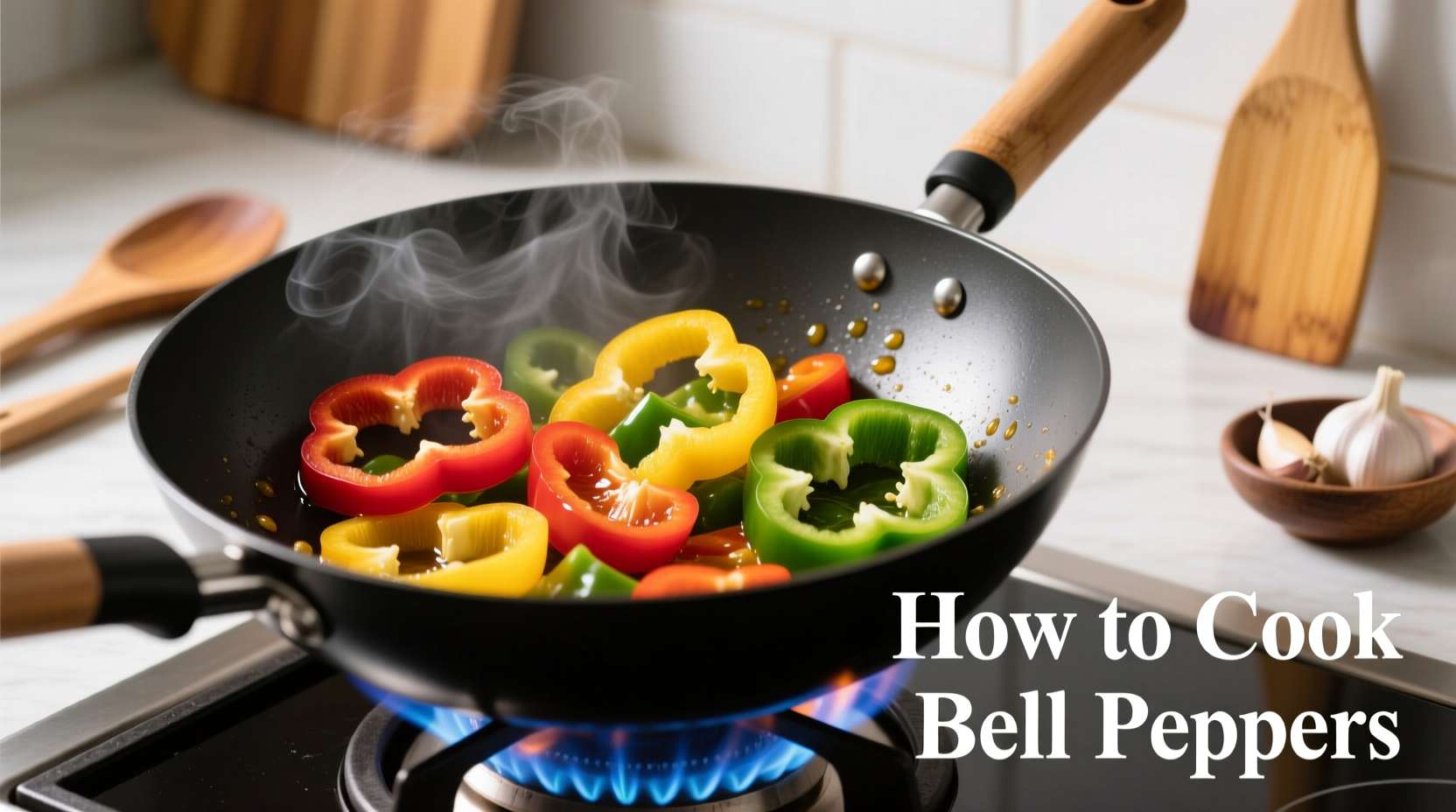Unlock Perfectly Cooked Bell Peppers Every Time
Whether you're a weeknight dinner hero or weekend culinary explorer, mastering bell pepper preparation elevates countless dishes. This guide delivers professional techniques you can implement immediately—no special equipment required. You'll learn exactly when to roast versus sauté, how to avoid common texture pitfalls, and flavor combinations that make peppers shine.
Selecting Your Canvas: Choosing Peppers for Cooking
The color you select dramatically impacts both flavor and cooking behavior. While all bell peppers share the same botanical family, their ripeness stage creates distinct culinary properties:
| Color | Sweetness Level | Best Cooking Methods | Flavor Notes |
|---|---|---|---|
| Green | Least sweet | Sauté, stir-fry | Grassy, slightly bitter |
| Yellow | Moderately sweet | Roast, grill | Citrusy, tropical notes |
| Orange | Sweeter | Roast, stuff | Honey-like undertones |
| Red | Most sweet | All methods | Fruity, complex |
According to USDA agricultural research, red bell peppers contain nearly 11 times more beta-carotene than green varieties due to extended vine ripening (USDA Nutrient Data Laboratory). This nutritional difference directly impacts flavor complexity when cooked.
Preparation Protocol: Beyond Simple Slicing
Proper preparation prevents common cooking disasters like uneven cooking or excess moisture. Follow this chef-tested sequence:
- Wash under cold water and dry thoroughly with clean towel
- Cut horizontally through the middle (not vertically) to separate top and bottom
- Remove seeds and white pith from both halves using a small spoon
- Peel away inner membranes—this reduces bitterness significantly
- For roasting/grilling: leave whole or cut into large flat pieces
- For sautéing: slice uniformly 1/4-inch thick for even cooking

Cooking Method Mastery: Temperature & Timing Guide
Each cooking technique creates fundamentally different results. Understanding these differences prevents recipe failures.
Roasting: The Sweetness Amplifier
Ideal for sauces, dips, and Mediterranean dishes. Roasting caramelizes natural sugars while softening texture.
- Oven method: 425°F (220°C) for 20-25 minutes, turning once, until blackened in spots
- Gas stove method: Direct flame for 8-12 minutes, turning frequently with tongs
- Critical step: Place roasted peppers in sealed container for 10 minutes—this steams off skins effortlessly
Sautéing: The Texture Preserver
Perfect for stir-fries, fajitas, and dishes requiring tender-crisp texture.
- Heat 1 tbsp oil in skillet over medium-high until shimmering
- Add peppers in single layer—crowding causes steaming
- Cook 5-7 minutes, stirring occasionally, until softened but still vibrant
- Add 1 tsp acid (lemon juice or vinegar) in final minute to brighten flavors
Grilling: The Flavor Transformer
Creates complex smoky notes ideal for standalone sides or salads.
- Preheat grill to medium-high (375-400°F / 190-200°C)
- Toss pepper pieces with 1 tsp oil to prevent sticking
- Grill 3-4 minutes per side until charred but still firm
- Pro tip: Place directly on grates, not in basket, for authentic char marks
Flavor Pairing Science: What Works Best
Food science research shows bell peppers pair exceptionally well with ingredients containing complementary volatile compounds. Based on flavor chemistry analysis from the Journal of Food Science, these combinations create synergistic flavor experiences:
- Acidic partners: Balsamic vinegar, lemon, tomatoes (enhances sweetness perception)
- Umami boosters: Mushrooms, soy sauce, Parmesan (balances pepper's brightness)
- Herb companions: Basil, oregano, cilantro (shares aromatic compounds with peppers)
- Avoid: Strong spices like cumin that overwhelm pepper's delicate flavor
Common Cooking Mistakes and Solutions
Even experienced cooks make these preventable errors:
- Mistake: Cooking peppers with onions from the start Solution: Add onions first—they take longer to caramelize
- Mistake: Using high heat for roasting Solution: Medium heat prevents burning before interior cooks
- Mistake: Discarding roasted pepper skins Solution: Peel skins completely—they become unpleasant when cooled
Storage and Reuse Strategies
Maximize your cooking efficiency with these professional storage techniques:
- Refrigerate cooked peppers in airtight container for up to 5 days
- Freeze roasted peppers flat on baking sheet before transferring to bags
- Repurpose cooking liquid: Roasting juices make excellent flavor base for soups
- Revive leftovers: Quick 30-second sauté restores texture to refrigerated peppers
When Cooking Methods Matter: Context Boundaries
Choosing the wrong cooking technique can ruin your dish. These context boundaries help you select appropriately:
- Use roasting when: Making sauces, dips, or dishes requiring soft texture (like stuffed peppers)
- Use sautéing when: Creating stir-fries, fajitas, or dishes requiring tender-crisp texture
- Use grilling when: Serving as standalone side or adding smoky dimension to salads
- Avoid boiling: Creates waterlogged texture and leaches nutrients (per FDA food preparation guidelines)











 浙公网安备
33010002000092号
浙公网安备
33010002000092号 浙B2-20120091-4
浙B2-20120091-4